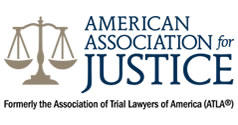Club Foot
- Anal Atresia
- Atrial Septal Defect
- Club Foot
- Coarctation Of The Aorta
- Craniosynostosis
- Heart Valve Defect
- Omphalocele
- Persistent Pulmonary Hypertension
- Pulmonary Atresia
- Pulmonary Valve Stenosis
- Spina Bifida
- Tetralogy Of Fallot
- Transposition Of The Great Arteries
- Ventricular Septal Defect
Birth Defects
Club foot is a birth defect that is characterized by a foot pointing downward and inward. It can affect one or both feet. About half the babies born with the defect have both feet affected.
At present, there is no way to prevent clubfoot. It is a common birth defect, affecting about one in 1,000 babies born every year. That means that more than 4,000 babies are born annually with club foot. The defect affects boys twice as often as girls.
Signs and Symptoms of Club Foot
The problem usually is evident during a newborn examination by the pediatrician. If both feet are clubbed, the soles of the feet may face each other. Other abnormalities may affect the bones of the feet, ankle joints, and muscles and ligaments.
Club foot might be diagnosed on an ultrasound examination before the baby is born. While nothing can be done for the infant before birth, parents can learn about the condition. An orthopedic surgeon should be contacted to discuss what options for treatment are available.
Treatment of Club Foot
Surgery usually is not needed to correct club foot. Most types of treatment involve using manipulation, casts, taping and splinting. These methods have reduced the need for surgery greatly and avoided long-term complications.
In the ideal situation, the infant should be treated during the first few weeks after birth when the ligaments and tendons are very flexible. The doctor gently moves the foot closer to the proper position and applies a cast that reaches from the upper thigh to the toes. Every five days to a week, the cast is removed and the foot repositioned and recast in a more normal position. A brace is often used for several months after the foot is in the right position to ensure that it stays that way.
Another way to treat the condition is to use a physical therapist who with the help of the family manipulates the baby's foot daily during the first two months; then, less often until the child becomes two years old. Each time the foot is manipulated, it is taped to hold it in the proper position. After physical therapy is completed, the baby wears splints at night until he or she starts to walk.
Club foot does not hurt and does not affect the child until he or she begins to stand and walk. At that time, depending upon the severity and type of the condition, a child might walk on the sides or even the top part of the foot instead of on the soles. Infection and a large hard callus may develop at the site where the baby is walking. Painful arthritis also may develop.
Causes of Club Foot
Among the possible environmental causes of club foot are infections, drug use, and smoking cigarettes.
At one time, it was believed that club foot was caused by the malposition of the fetus in the womb. That does cause some foot defects, but these generally heal themselves in a short time.
It is known that pregnant women should not smoke, especially if they have a family history of club foot. One study showed that in women with a family history of club foot, their risk of having a baby with club foot was increased 20 times if they smoked.
In 2008 a team of researchers at the University of Washington in St. Louis were able to identify the first gene linked to club foot in humans.
Long-Term Outlook
If a baby with club foot is treated properly early-on, he or she will most likely wear normal shoes, participate in sports, and lead a normal life. The affected foot, however, is in general 1 to 1 ½ shoe sizes smaller than the other foot and the calf may be a bit thinner.
Contact a Birth Defect Attorney
If your baby was born with club foot, you might want to contact an attorney to find out if you have a legal claim. Some medications when taken during pregnancy are believed to be linked to an increase in the risk for certain birth defects such as club foot. To learn more, please contact a birth defect attorney at Flood Law Group today.


